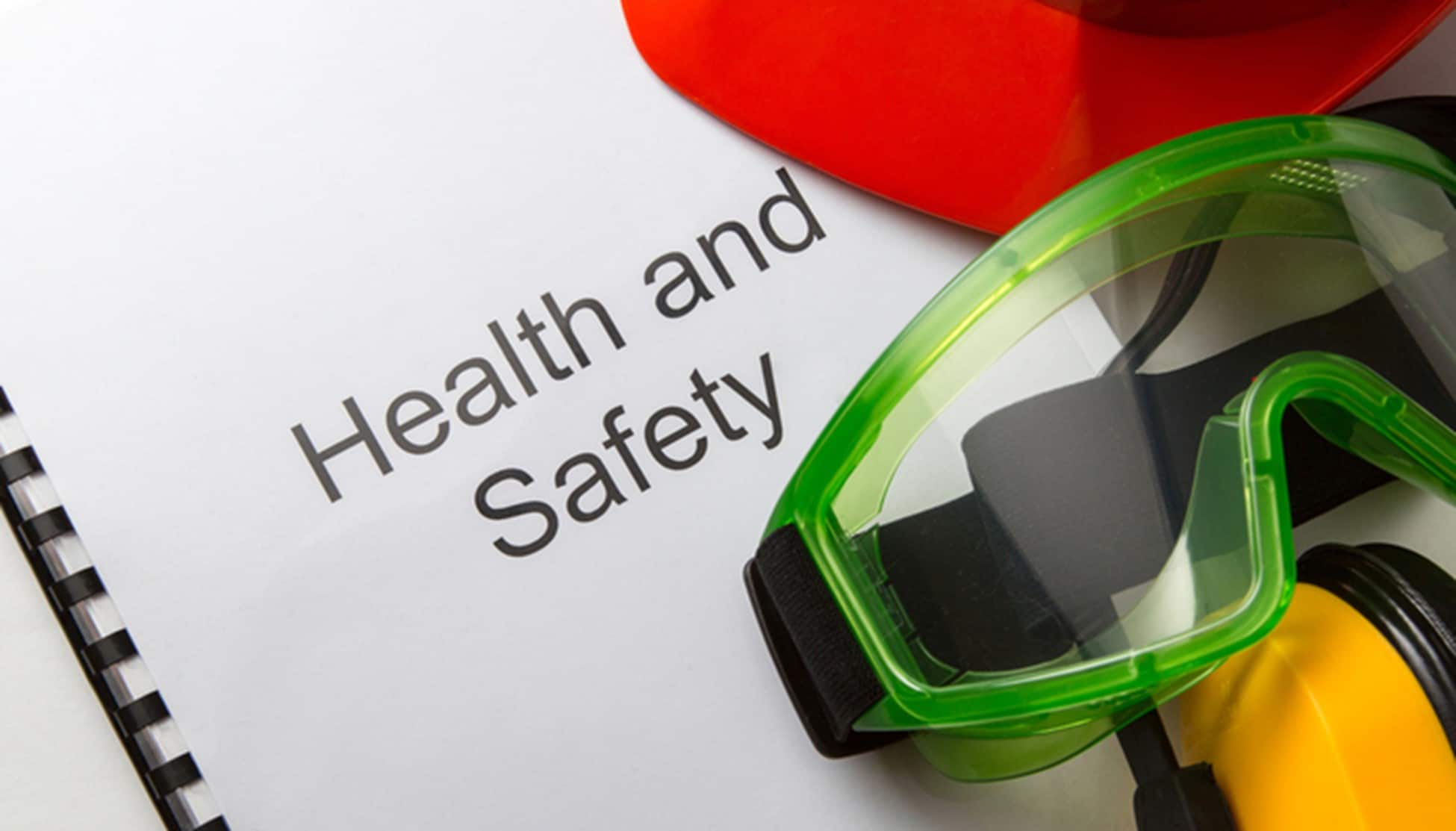
HAZWOPER training is an essential part of work preparations for any company that deals with hazardous waste operations and emergency responses. However, several different courses can be undertaken in order to have both the employer and employees be appropriately educated. Additionally, there are some misconceptions about similar training and courses covering only a part of what is needed in jobs that deal with such operations. We will begin this guide by defining what exactly is HAZWOPER and what is the most common misunderstanding connected to it. After that, we will explain what the required courses entail and which one you should choose – whether you are an employer or an employee in a sector that deals with the relevant operations.
What is HAZWOPER?
Occupational Safety and Health Administration (OSHA) has issued the Hazardous Waste Operations and Emergency Response (HAZWOPER) standards on March 6, 1989, to protect workers and aid them in handling hazardous substances safely and effectively. Before we continue, here are some examples of what constitutes a hazardous substance, environment, or situation, according to OSHA HAZWOPER standard:
- High concentrations of toxic substances.
- A situation that is life or injury-threatening.
- A situation that requires the area to be evacuated.
- IDLH (Imminent Danger to Life and Health) environments.
- A condition that poses a fire or explosion hazard.
- A situation that presents an oxygen-deficient atmosphere.
- A situation requiring immediate attention because of the danger posed to employees in the area.
The Hazardous Waste Operations and Emergency Response Standard (HAZWOPER) program was developed by OSHA to protect hazardous site workers. The extensive regulations contained within this program ensure their safety and health when followed correctly.
To be more precise, this OSHA standard provides relevant information to employers, emergency response workers, and other employees who will potentially be exposed to hazardous substances. Moreover, it provides training criteria that serve to improve workplace safety and health, as well as reduce workplace injuries and illnesses that could possibly occur due to exposure to hazardous substances. Both employers and employees must be able to understand the scope and application of the HAZWOPER standard, as well as that they can determine which sections apply to their specific work operations.
HAZWOPER vs. HAZMAT training
There is one common misconception – that the terms Hazardous Waste Operations and Emergency Response (HAZWOPER) and Hazardous Materials (HAZMAT) are mutually interchangeable. The terms may sound very similar, but their meanings are considerably different.
HAZMAT is an abbreviation for “hazardous materials.” Those materials are ones that pose a risk to health, property, or the environment when exposed to them. HAZMATs include but are not limited to nuclear waste products and toxic chemicals, as well as chemical, biological or radiological substances that can be released as a liquid, solid, gas, or combination of all three.
As we already mentioned, HAZWOPER is an acronym for “Hazardous Waste Operations and Emergency Response.” This is a set of guidelines for employers and employees who are regularly exposed to hazardous substances on work sites. These regulations are made and enforced in order to keep both the employees and the environment safe.
According to the professionals in the Environmental Health & Safety (EH&S) field, the best way to differentiate between the two is to keep in mind that, most often, HAZWOPER applies to training for workers on contaminated sites. In contrast, HAZMAT applies to the workers of the Department of Transportation (DOT).
However, seeing how HAZMAT and HAZWOPER are dealing with similar circumstances, it is not hard to get confused about which type of training and certification is needed for you or your workers.
Workers who operate in the vicinity of or work with hazardous materials will usually need to complete the HAZWOPER training course. These courses are designed for people tasked with handling, loading, unloading, labeling, managing, or transporting the above-mentioned hazardous materials. It is intended for emergency responders, workers at contaminated sites, and anyone who works at facilities that deal with hazardous waste treatment, storage, or disposal.
HAZMAT workers are asked to complete either a 40-hour training course or a 24-hour HAZWOPER course depending on the expected exposure level. Additionally, there is also an annual refresher course and role-specific training courses. It is highly recommended you look up the Department of Transportation HAZMAT training requirements to ensure you will get the correct training.
Not sure about which course to take? We’ve got you covered. Keep reading or reach out to us using the contact form or the phone or email to learn more about what may be required for you or your employees.
Who needs Hazwoper training?
Five distinct types of operations that fall within the scope of the HAZWOPER program:
- Clean-up operations are required by a governmental body, including but not limited to federal, state, or local, which involve hazardous substances and are conducted at hazardous waste sites that are not controlled.
- Corrective actions involve clean-up operations at sites covered by the RCRA (Resource Conservation and Recovery Act).
- Operations that involve hazardous waste conducted at TSD (Treatment, Storage, and Disposal) facilities regulated under RCRA.
- Operations that can generate hazardous waste but are not TSD facilities.
- Emergency response operations involving the possible release of, or substantial threats of release of hazardous substances, regardless of the hazards’ location.
All employers and employees who are a part of these operations must go through HAZWOPER training – whether it be a full one or an annual refresher.
The first two bullet points refer to environmental remediation activities that are planned and are happening at locations such as Brownfield sites, Superfund sites, abandoned industrial sites, and other similar locations. These locations are recognized as having the potential for worker exposure to hazardous substances by one or more governmental agencies and must comply with 29 CFR 1910.120(b)-(o).
The third bullet point covers Treatment, Storage, and Disposal
facilities that are built and permitted to receive, store, treat and dispose of hazardous waste. TSD employers and employees with an RCRA permit or interim status must comply with 29 CFR 1910.120(p). However, other areas not covered by a permit or interim status, which are still inside these facilities and could still have uncontrolled releases of hazardous substances, must comply with 29 CFR 1910.120(q).
The fourth bullet point – operations that can generate hazardous waste but are not TSD facilities – are also covered by the HAZWOPER standard. For example, manufacturing facilities that might have the potential for an emergency to occur due to an unrestricted release of hazardous substances need to comply with 29 CFR 1910.120(q). Additionally, those who store hazardous waste less than 90 days and conditionally-exempt small quantity generators must abide by the 1910.120(p)(8) section of HAZWOPER.
As for the last bullet point, emergency response operations have the potential to occur at public and private facilities, universities, research laboratories, chemical facilities, roads/highways, and railroads, as well as any location that has the potential for an accidental release of hazardous substances. The scope of work required for containing and controlling such hazardous substance releases, when the exact nature and extent of the hazard are unknown, is fully regulated under the HAZWOPER standard. In the case of these operations, employers and workers must comply with 29 CFR 1910.120(q).
To clarify further, emergency responses covered by HAZWOPER standard include the following situations, as well as other similar scenarios:
- Leakage of a hazardous substance from a storage container or tank,
- Chemical fires,
- An overturned truck or rail car which carried hazardous materials,
- Responses dealing with cases of bloodborne pathogens;
- Mechanical breakdowns during chemical processes,
- Site preparation for uncovering buried hazardous waste,
- Operations of excavation/trenching of buried toxins or contaminants, as well as
- Building earthen berms to contain hazardous waste runoff.
Workers who are new to uncontrolled hazardous waste or emergency response operations need to complete the 40-hour HAZWOPER training course successfully. This includes general site workers (such as employees in the construction industry, equipment operators, and laborers in the general industry) and on-site supervisors and management.
A 24-hour training course is deemed appropriate for employers and employees at uncontrolled hazardous waste operations who will most likely not experience high-risk exposure hazards. This includes employees who are only occasionally working at such sites for specific limited tasks, and those who work in areas where hazards do not exceed permissible exposure limits.
Additionally, management and supervisors who typically need 40-hour HAZWOPER training can meet OSHA requirements with this 24-hour course in cases when their only area of responsibility are workers who were required to finish only 24-hour HAZWOPER training. However, these managers and supervisors will also need to complete eight hours of specialized training at the time of job assignment.
Moreover, HAZWOPER does not apply to the accidental or foreseeable release of a hazardous substance that is limited in quantity, as it would not require an emergency response, nor does it pose a significant threat to the safety and health of workers near the substance release. Those incidents are referred to as “incidental releases” in the definition of “emergency response or responding to emergencies” according to 29 CFR 1910.120(a)(3). They are limited in quantity, exposure potential, or toxicity and have no potential of becoming emergencies within a short time frame.
Types of HAZWOPER training courses
The types of HAZWOPER training courses can be divided into two distinct categories – initial courses (24-hour and 40-hour ones) and the 8-hour refresher course. In the following text, we will explain the differences between the initial training courses in detail, and explain why and when the refresher course is required.
However, the main point to keep in mind is that this continuing education serves to prevent workplace injury and ensure both employers’ and employees’ occupational safety working in the operations mentioned above.
HAZWOPER 40-Hour Training
The 40-hour course is designed with workers who are involved in voluntary clean-up operations, emergency response operations, clean-up operations, storage, disposal, or treatment of hazardous substances or uncontrolled hazardous waste sites in mind. HAZWOPER 40-hour training is a requirement for employees working on a project consisting of Uncontrolled Hazardous Waste Operation mandated by the Government.
HAZWOPER 24-Hour Training
The 24-hour course is designed to cover a spectrum of issues concerning hazard recognition at work sites. HAZWOPER 24-hour training is a requirement for employees visiting uncontrolled hazardous waste operations mandated by the Government.
Difference between 24-hour courses and 40-hour courses
When it comes to initial HAZWOPER courses, there are two courses available – a 24-hour one and a 40-hour one. So – what are the main differences between these two courses, and how should you know which one is the appropriate course to take for your training?
24-Hour HAZWOPER Training
The 24-hour HAZWOPER training course is designed keeping in mind the employees who are going to be working close to the hazardous substances and who may potentially be exposed to such materials. However, they will not be faced with the daily risks of handling or cleaning up hazardous substances and materials. Their exposure to hazardous substances will not be at or above the PELs (Permissible Exposure Limits). PELs are outlined by OSHA, and all relevant information can be found on their website.
This course includes the following topics: fall protection, site emergencies, site safety planning, detecting hazardous materials, respirators, agencies and regulations, decontamination, confined space, levels of protection, hazardous waste, hazard communication, toxicology, and types of hazards.
What Are the Requirements for the 24-Hour HAZWOPER Course?
As the name already implies, the main requirement for the 24-Hour HAZWOPER course is 24 hours of HAZWOPER training. It is good to keep in mind that there is an option for online training. Along with the 24 hours of study time, there is also a requirement of field experience, which is needed as both practice and to cover on-the-job specifics. The minimum is one day, with a trained and experienced supervisor.
40-Hour HAZWOPER Training
On the other hand, the 40-hour HAZWOPER course is designed for workers who will be regularly in contact with hazardous materials or involved in the storage, treatment, or clean-up operations of such materials in a day-to-day capacity. Additionally, this 40-hour training is a requirement for any employees who will be exposed to hazardous substances at or above the PELs.
Moreover, this course covers the following topics: types of hazards, personal protective equipment (PPE), levels of protection, decontamination, toxicology, fire prevention, hazardous materials, medical surveillance, site emergencies, drums and containers, fall hazards, electrocution, struck by hazards, caught-in hazards, hazardous communication, confined space, and more.
What Does the 40-Hour HAZWOPER Course Require?
As is the case with the 24-hour training course, this initial training also requires 40 hours of study time. Additionally, this course is also available as online training. Moreover, for the successful completion of the training course, the minimum field experience is three days – with a trained and experienced supervisor conducting the on-site practice.
Additionally, since the individuals undergoing this course will be regularly exposed to hazardous substances that can and will exceed the PELs, they must know how to wear the appropriate personal protective equipment (PPE). Certification of this course will require employees to show that they can physically wear an SCBA (self-contained breathing apparatus) and a fully-encapsulating suit.
Who Must Complete 24-hour or 40-Hour HAZWOPER Training?
OSHA-accepted HAZWOPER training is a requirement for anyone who works at a potentially contaminated site. If your worksite is a designated HAZWOPER site under OSHA regulation 29 CFR 1910.120, you are required to take either the 24-hour or 40-hour HAZWOPER training course.
HAZWOPER 8-Hour Annual Refresher
The 8-hour Refresher Courses must meet the requirements outlined explicitly in OSHA 29 CFR 1910.120 for the annual 8-hour refresher training for hazardous waste site workers. These courses are designed for site workers who remove hazardous waste or to those exposed or potentially exposed to hazardous substances or possible health hazards.
Refresher training may be given in segments so long as the required 8 hours have been completed before 365 days have passed since they have undertaken the initial course.
Additionally, a good thing to keep in mind is that computer-based training may meet some refresher training requirements, seeing how it can cover topics relevant to workers’ assigned duties. However, it must be supplemented by the opportunities to inquire about any unclear segments and by an assessment of the hands-on performance of work tasks by a qualified trainer.
How to Sign Up for Your HAZWOPER Training Course and Obtain HAZWOPER Certification
You can use our online course catalog to register for the appropriate HAZWOPER training course today – you can register individually or sign up your entire team. Additionally, we provide many different Cal OSHA, EM-385, Federal OSHA, MSHA, NAVFAC, and USACE Health & Safety Training courses, which might prove beneficial for your company! These courses are available in Nevada and are Nevada OSHA compliant, fulfilling every training requirement outlined in the OSHA regulation relevant to the training course.








